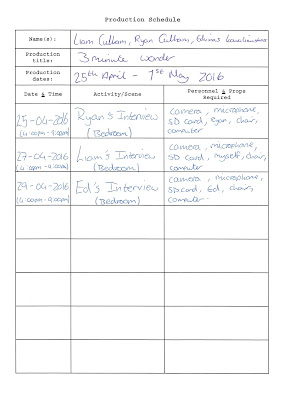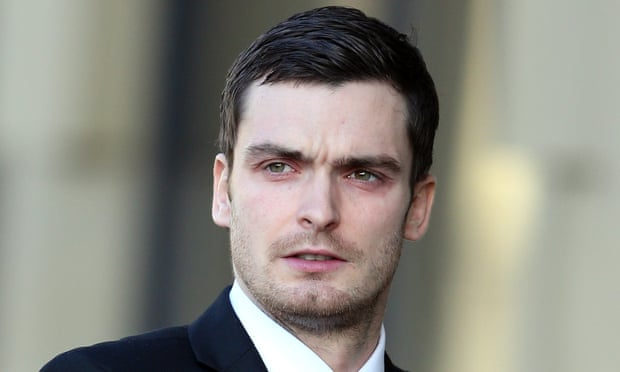Primary Research/Self-generated Research
Primary research is a certain type of research which is carried out by yourself to answer specific issues or questions. This can involve the use of questionnaires, surveys or interviews with groups or individual people. For my documentary project I created my very own questionnaire which I used to find out what other people knew and wanted to know about YouTube gaming and my channel "Orbit TV" in general. I received some excellent feedback which really helped me a lot when I planned my documentary. Interviews with people before-hand was not needed for my project as Me and my two friends ware the only people involved with the channel. As my survey was made by survey monkey, I was able to send it out to my friends and family to answer, this gave me a wide range of people to gather data from so I got a variety of different answers. At times I did get some feedback that wouldn't be used for the data for me to reflect on as some people messed around and gave improper answers. I simply removed these results and just analysed the feedback that was really useful for me.
Secondary Research
 Secondary research is generally collected or gathered from previous research done by someone else, rather than primary which is collected by yourself. For my documentary I researched websites that had information of other YouTubers, stating how they manage to run their channel and their previous experiences. I also done some extra research to examine who are the most watched YouTubers in the UK, this really helped me see what sort of channels people like to watch on YouTube and if people would actually be interested in watching a documentary about Orbit TV. Another good website I stumbled upon something which mentioned "Why is it good to have a YouTube channel" and this was very useful to me as I could easily relate to it. This research was extremely helpful and made the planning go very smoothly for my project. For the PG Tips advert we done some research into the audience that the product is currently aimed at, allowing us to know the changes we need to make to our advert for it to appeal to our teenage audience. We also had to gather lots of research online and compile it into a presentation, which we later presented in front of the class. Lastly for the DepicT Competition we really only had to watch other people 90 second videos for inspiration and to get an idea of what to do ourselves.
Secondary research is generally collected or gathered from previous research done by someone else, rather than primary which is collected by yourself. For my documentary I researched websites that had information of other YouTubers, stating how they manage to run their channel and their previous experiences. I also done some extra research to examine who are the most watched YouTubers in the UK, this really helped me see what sort of channels people like to watch on YouTube and if people would actually be interested in watching a documentary about Orbit TV. Another good website I stumbled upon something which mentioned "Why is it good to have a YouTube channel" and this was very useful to me as I could easily relate to it. This research was extremely helpful and made the planning go very smoothly for my project. For the PG Tips advert we done some research into the audience that the product is currently aimed at, allowing us to know the changes we need to make to our advert for it to appeal to our teenage audience. We also had to gather lots of research online and compile it into a presentation, which we later presented in front of the class. Lastly for the DepicT Competition we really only had to watch other people 90 second videos for inspiration and to get an idea of what to do ourselves.Quantitative Research
Quantitative research is conducted from using statistics and figures. To begin with I already knew that my documentary wouldn't be very popular on TV, so I chose to ignore finding out when these types of documentaries based on YouTube may be shown. Instead, I chose to actually go on YouTube itself and watch look at videos of YouTubers talking about them and how they started in general. By watching these videos I saw that they were very popular amongst people that follow them and lots of positive feedback was left too. This made me feel confident that people would be interested in my documentary about Orbit TV.
Qualitative Research
Qualitative research helps to understand reason, opinions and motivations, it also may help to give insights into a problem you may have and help to develop an idea. As mentioned before I examined the comments of other YouTubers personal stories to see how much they enjoyed it. A website also posted a YouTubers documentary based on why and how they run their channel and it got some amazing written reviews. I used this written feedback to understand what people like about these documentaries and what they would like to see more of, this helped me improve certain parts of my documentary to make more people stay engaged with my project.
Data Gathering Agencies
BARB Standards for Broadcasters Audience Research Board, compiles audience measurement and television ratings. The website shows statistics for the highest viewed TV shows, and allows you to find out about a certain TV show of you choice. IMDB stand for 'Internet Movie Database', form here you can find out almost anything about a certain Film, TV show, game and loads of other things. From here you can see what is most popular amongst lots of people to see what they enjoy most. What make this sites data extremely genuine is that it is collect from the general public instead of just people that find the information about from the internet.
Budget information and reviews on films are the most visited topics on the site "IMDB" as these are what people want to find out before they watch a film and straight after they watch a film. A great example of a movie review to decide whether or not to watch a movie is this "The computerized creation that is Pandora overflows with beauty and terror (those banshees are a wonder) that dwarves the mundane stuff where the villains, military (Stephen Lang) and corporate (Giovanni Ribisi), bluster with predictable results. The last third of the movie, a battle between the Na'vi and their human destroyers, is a groundbreaking blend of digital and live-action. OK, it's unnerving that a movie preaching peace hits its visual peak with scenes of mass destruction. But Avatar is no Hollywood w*nkfest. It extends the possibilities of what movies can do. Cameron's talent may just be as big as his dreams. Definitely worth a watch!" This review was written dedicated to the movie avatar, by seeing this review it will instantly tell you that it will definitely be worth having a look at. As for budget info, people tend to look at this after they have watched a movie, mostly because they are curious about how much it actually cost to make. The budget for the movie "Avatar" is estimated around $237,000,000 and on the opening weekend £8,509,050 was raked in, in the UK (18 December 2009)
Budget information and reviews on films are the most visited topics on the site "IMDB" as these are what people want to find out before they watch a film and straight after they watch a film. A great example of a movie review to decide whether or not to watch a movie is this "The computerized creation that is Pandora overflows with beauty and terror (those banshees are a wonder) that dwarves the mundane stuff where the villains, military (Stephen Lang) and corporate (Giovanni Ribisi), bluster with predictable results. The last third of the movie, a battle between the Na'vi and their human destroyers, is a groundbreaking blend of digital and live-action. OK, it's unnerving that a movie preaching peace hits its visual peak with scenes of mass destruction. But Avatar is no Hollywood w*nkfest. It extends the possibilities of what movies can do. Cameron's talent may just be as big as his dreams. Definitely worth a watch!" This review was written dedicated to the movie avatar, by seeing this review it will instantly tell you that it will definitely be worth having a look at. As for budget info, people tend to look at this after they have watched a movie, mostly because they are curious about how much it actually cost to make. The budget for the movie "Avatar" is estimated around $237,000,000 and on the opening weekend £8,509,050 was raked in, in the UK (18 December 2009)
Audience and Market Research
 As I have a primary target audience for my YouTube channel (14+) I chose to keep this for my documentary, as people that enjoy watching my YouTube channel would really like to watch this documentary. Although the majority of people that watch documentaries are 18+, because my documentary is YouTube based, it is focused on a more younger audience. After sending out my survey's via email, I was able to see that the majority of my audience is in fact Male, although this may be very bias it is easy for me to identify who I would aim the documentary mainly towards. Based of the survey I was able to see what people wanted to know about Orbit TV, therefore we talked about the main things people asked for in the documentary. For the PG Tips advert, we aimed this at teenagers, allowing them to know PG Tips is the greatest tea. The majority of teenagers that watched the advert also said that this would be their number 1 choice. We also sent out surveys from survey monkey for this project too.
As I have a primary target audience for my YouTube channel (14+) I chose to keep this for my documentary, as people that enjoy watching my YouTube channel would really like to watch this documentary. Although the majority of people that watch documentaries are 18+, because my documentary is YouTube based, it is focused on a more younger audience. After sending out my survey's via email, I was able to see that the majority of my audience is in fact Male, although this may be very bias it is easy for me to identify who I would aim the documentary mainly towards. Based of the survey I was able to see what people wanted to know about Orbit TV, therefore we talked about the main things people asked for in the documentary. For the PG Tips advert, we aimed this at teenagers, allowing them to know PG Tips is the greatest tea. The majority of teenagers that watched the advert also said that this would be their number 1 choice. We also sent out surveys from survey monkey for this project too.
























